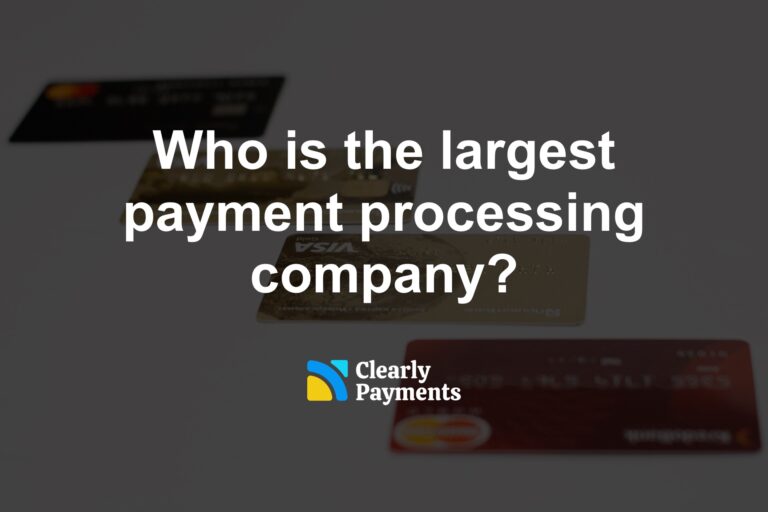Since 2009, the financial landscape has been undergoing a transformation with the emergence of cryptocurrencies. As digital currencies grow in popularity, merchants around the world are exploring the potential benefits of accepting payments in cryptocurrency.
This guide aims to provide merchants with an overview of cryptocurrency payments, highlighting the advantages, challenges, and best practices for integrating crypto payment methods into their business operations.
Understanding Cryptocurrency
Cryptocurrencies are digital or virtual currencies that use cryptography for security and operate on a decentralized network of computers. Unlike traditional currencies issued by governments and central banks, cryptocurrencies are typically based on blockchain technology, a distributed ledger that records all transactions across a network of computers.
Popular cryptocurrencies include Bitcoin (BTC), Ethereum (ETH), and Ripple (XRP). Each cryptocurrency operates on its own underlying technology and has unique features that may cater to different use cases.
How Common is Cryptocurrency for Payments
Cryptocurrency payments, while sparking interest, have seen limited adoption within the retail landscape (see some statistics below). Currently, only a small percentage of businesses, particularly those in the eCommerce and online services sectors, have embraced cryptocurrencies as a viable payment option. Notable exceptions include industry giants such as Microsoft, Overstock, and Starbucks, though these instances remain more of an anomaly than a widespread trend.
The primary hurdle hindering broader acceptance lies in the inherent volatility of cryptocurrencies, introducing an element of uncertainty and risk for businesses when compared to traditional currencies. Additionally, the evolving regulatory landscape and a lack of widespread infrastructure further limit accessibility for businesses looking to integrate cryptocurrencies into their payment systems.
Key statistics shed light on the current state of cryptocurrency adoption:
- Cryptocurrency payments made up just 0.16% of the global e-commerce transaction value in 2022.
- Certain sectors, including travel, digital goods, and entertainment, stand out as leaders in adopting cryptocurrency payments.
- Cryptocurrency use for payments is more prevalent among young adults and tech-savvy individuals.
As of 2024, there has been a growing trend of businesses starting to accept cryptocurrencies as a form of payment. Many major companies and smaller businesses had begun exploring or implementing crypto payment options. It is likely that this trend will continue barring any regulatory hurdles.
Advantages of Accepting Cryptocurrency Payments
Embracing the era of digital finance, businesses stand to gain numerous advantages by incorporating cryptocurrency payments into their operations. Here are some of the advantages:
Global Reach: Cryptocurrencies transcend geographical boundaries, enabling merchants to reach customers from around the world without the constraints of traditional banking systems. This can be particularly advantageous for online businesses seeking to expand their customer base globally.
Lower Transaction Costs: Traditional payment methods involve intermediaries such as banks and payment processors, leading to various fees and charges. Cryptocurrency transactions, on the other hand, can have lower processing fees, reducing the overall cost of payment processing for merchants.
Faster Settlements: Cryptocurrency transactions are typically faster than traditional banking transactions, providing merchants with quicker access to funds. This is particularly beneficial in industries where fast transaction settlements are crucial, such as e-commerce or high-frequency trading.
Financial Inclusion: Cryptocurrencies have the potential to bring financial services to the unbanked and underbanked populations, fostering financial inclusion. By accepting cryptocurrency payments, merchants contribute to a more inclusive global economy.
Challenges in Cryptocurrency Payments
While there are compelling reasons to embrace cryptocurrency payments, merchants should be aware of potential challenges and considerations:
Price Volatility: Cryptocurrency prices are known for their volatility, with values fluctuating significantly over short periods. Merchants accepting cryptocurrencies may be exposed to the risk of currency value changes, impacting the equivalent value of goods or services.
Regulatory Compliance: The regulatory environment for cryptocurrencies varies across jurisdictions. Merchants must be aware of and comply with relevant regulations to ensure legal and secure transactions.
Integration and Education: Integrating cryptocurrency payments into existing systems may require technical expertise. Merchants should invest in proper education and training for their staff to manage cryptocurrency transactions effectively.
Customer Education: Educating customers about the benefits of using cryptocurrencies and how to make secure transactions is essential. Providing clear information on the checkout process and potential fluctuations in cryptocurrency values helps build trust with customers.
Top Cryptocurrency Used for Payments
The leading cryptocurrencies utilized for payments constitute a diverse and dynamic landscape. Among the frontrunners is Bitcoin (BTC), widely recognized as the pioneer in the digital currency space. Known for its decentralized nature and widespread acceptance, Bitcoin remains a popular choice for transactions. Ethereum (ETH) stands out not only as a cryptocurrency but also for its smart contract capabilities, enabling more complex and automated payment processes.
Ripple (XRP), designed with a focus on facilitating cross-border payments, has gained traction for its speed and efficiency. Litecoin (LTC), often referred to as the “silver to Bitcoin’s gold,” offers faster transaction confirmation times, making it an attractive option for merchants seeking quicker settlements.
Beyond these prominent choices, an array of altcoins, including Cardano (ADA) or Solana (SOL), have emerged with unique features and functionalities. The dynamic nature of the cryptocurrency market ensures that the landscape for payments continues to evolve, presenting merchants with an array of options catering to diverse preferences and requirements.
In the future, there will likely be the opportunity to use central bank digital currencies (CBDCs) that are digital tokens issued by the government. This is covered in the below section.
What are Stablecoins?
Stablecoins represent a crucial innovation within the cryptocurrency space, designed to address the inherent volatility associated with traditional cryptocurrencies like Bitcoin and Ethereum. Unlike their more volatile counterparts, stablecoins aim to maintain a stable value by pegging their worth to established fiat currencies, commodities, or other assets. This stability makes them particularly attractive for users seeking a reliable medium of exchange and store of value in the rapidly evolving world of digital currencies.
One common type of stablecoin is pegged to a fiat currency, such as the US Dollar or Euro, with a 1:1 ratio. A primary USD stablecoin in USDC (aka USD coin). This means that for every stablecoin in circulation, there is an equivalent amount of fiat currency held in reserve to ensure stability. The pegging mechanism is typically facilitated through smart contracts and algorithmic mechanisms, allowing for real-time adjustments to the circulating supply of stablecoins based on market demand.
Central Bank Digital Currencies (CBDCs) for Payments
Central Bank Digital Currencies (CBDCs) are digital forms of national currencies issued by central banks, representing a government-backed digital alternative to physical cash. These digital currencies aim to leverage the benefits of blockchain technology, providing increased efficiency, security, and new possibilities for monetary policy. Both Canada and the USA are actively exploring CBDCs.
Key Advantages of CBDCs for Payments
Government Backing: Issued by central banks, CBDCs boast the full faith and credit of the government, providing unparalleled stability and trust compared to privately issued cryptocurrencies.
Enhanced Security: Leveraging advanced security features such as blockchain technology, CBDCs have the potential to mitigate fraud and safeguard transaction integrity effectively.
Faster Settlements: CBDCs could facilitate real-time or near-instantaneous payment settlements, streamlining financial transactions and potentially reducing costs for users.
Financial Inclusion: CBDCs have the potential to extend digital payment access to the unbanked and underbanked populations, fostering financial inclusion on a broader scale.
Cross-Border Payments: CBDCs may enhance the efficiency and cost-effectiveness of cross-border payments, addressing frictions in international transactions.
Monetary Policy: CBDCs offer central banks improved tools for implementing monetary policy and monitoring economic activity, contributing to more effective financial governance.
CBDC Challenges and Considerations
- Design and Implementation: The careful design and implementation of CBDCs are crucial to ensure security, privacy, and seamless interoperability with existing payment systems.
- Privacy Concerns: Addressing concerns about potential surveillance and data privacy implications is essential for gaining public trust in CBDCs.
- Impact on Financial Systems: The widespread adoption of CBDCs could significantly alter the roles of commercial banks and other financial intermediaries, requiring careful consideration of their evolving functions.
- Interoperability: Ensuring seamless interoperability between CBDCs of different countries and with existing payment systems is imperative for the global adoption and effectiveness of CBDCs.
Best Practices for Merchants in Cryptocurrency
In the rapidly evolving landscape of cryptocurrency, merchants are presented with both opportunities and challenges in adopting digital assets for transactions. This section covers some of the best practices for merchants in the realm of cryptocurrency.
Choose a Reliable Payment Processor: Select a reputable cryptocurrency payment processor to facilitate transactions securely. Look for processors with a track record of reliability, security, and customer support. Many traditional payment processors now help merchants accept cryptocurrency.
Diversify Cryptocurrency Acceptance: While Bitcoin is the most well-known cryptocurrency, consider accepting a variety of cryptocurrencies to cater to a broader customer base. This can also help mitigate the impact of price volatility.
Set Clear Policies: Establish clear and transparent policies regarding cryptocurrency transactions, including refund procedures, transaction fees, and potential price fluctuations. Communicate these policies to customers to manage expectations.
Monitor Regulatory Developments: Stay informed about regulatory developments related to cryptocurrencies in your operating jurisdictions. Compliance with local laws is crucial for a smooth and legal cryptocurrency payment process.
Use a Secure Wallet: Implement secure cryptocurrency wallets to store and manage received funds. Choose wallets with robust security features to protect against potential security threats.




